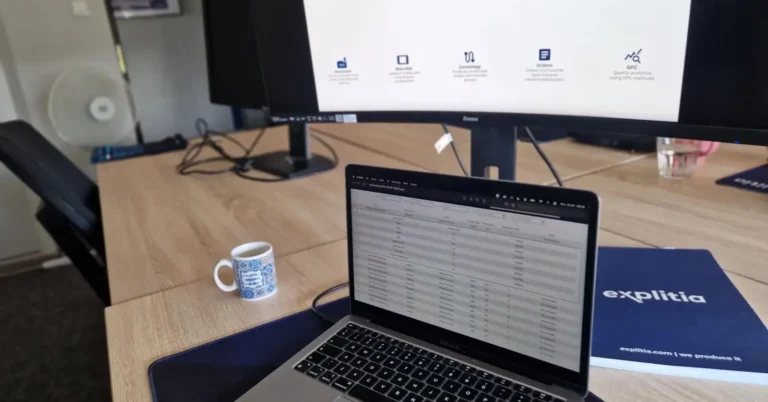What benefits can the combination of Traceability and AI bring to production processes? How can product traceability influence decision-making and predictive actions? You will find answers to these questions in this article, which explains why the synergy of Traceability and AI is essential for improving production quality and minimising errors.
Traceability and AI – Why is synergy necessary?
To answer the question in the headline, let’s consider our daily actions. Every day, we make decisions based on our experiences. We choose our clothes based on weather conditions, preferences, and past experiences. This is our life’s database. For example, children often choose their outfits quite “creatively.” Parents, drawing on their experiences, advise: “Wear something smart because today is the end of the school year” or “Take an umbrella; it’s muggy, it might rain.” AI works similarly. It learns from databases, analysing available information.
However, imagine if AI learned only from left-wing or right-wing perspectives. It wouldn’t have information we could consider objective, right? The more diverse and comprehensive the data, the better decisions AI can make. This is, of course, a double-edged sword. On one hand, it’s beneficial for AI to draw from a vast source, but on the other hand, some information might be false. However, if AI has a substantial amount of data, the learning process allows it to understand which information is incorrect.
What about the industry? In this sector, AI has at least as many opportunities as companies in the online sales sector. Industrial companies often also engage in online marketing and sales activities but additionally have access to incredibly powerful tools related to data directly from machines and manufacturing processes.
And this is where traceability comes in.
Traceability and AI – Possibilities
Product traceability aims to document how a given product is made – from which raw material, when it was produced, under what conditions, and where the packaging came from. You can read more about traceability in our article.
Thanks to traceability, we can build a language model that genuinely helps in the inference process. For example:
- It can suggest to the operator on which machine to produce a given product, based not on the full efficiency of the machine but on the efficiency for that specific product.
- It can act predictively, suggesting what to do to avoid potential machine downtime or failures.
- It can help respond earlier, thereby eliminating situations where the produced goods do not meet established standards, are not fit for sale, or need to be disposed of.
With data, the possibilities are enormous! AI learns from available information, including our human errors. Errors related to incorrect or substandard production and prolonged review processes and poorly planned production. This allows such a system to suggest the most probable actions we should take to reduce costs or avoid situations where a batch of production must be discarded due to non-compliance with standards.
Of course, every production company must consider a certain margin for the necessity of withdrawing goods or even an entire batch of products from the market or their disposal. However, the more IT solutions we have with access to real data, the faster and more accurately we can make decisions, optimise processes, and maximise production efficiency.


